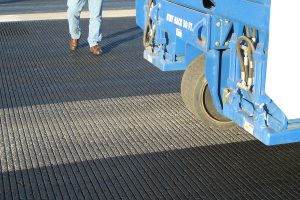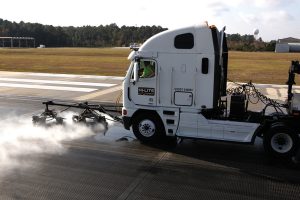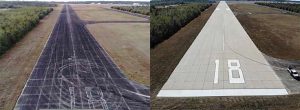The Importance of Proper Surface Preparation for Airfield Markings
Proper surface preparation is crucial for ensuring airfield markings' longevity, safety, and visibility. As a leader in airfield surface preparation services, Hi-Lite understands that up to 80% of all coating failures at airfields worldwide can be directly attributed to inadequate surface preparation, which affects coating adhesion. Improper surface preparation can lead to markings that become unsafe, faded, cracked, worn, and difficult for pilots to see.

Hi-Lite's Expertise in Airfield Surface Preparation
At Hi-Lite, our technicians recognize that proper surface preparation is the key to achieving maximum paint adhesion to any airfield surface. We understand that surfaces that have been improperly prepared or cleaned can compromise the paint's bonding ability, ultimately leading to premature marking failure.
Our team of experts is well-versed in the unique challenges associated with various airfield surfaces, including concrete, asphalt, and existing painted surfaces. Utilizing the latest equipment and techniques ensures that your airfield surfaces are thoroughly cleaned and prepared for optimal marking adhesion and longevity.

Concrete Surfaces
Concrete surfaces often contain a top layer of cure compound, which eventually turns to powder and wears off the surface. Applying paint directly to the cure compound is a recipe for failure, as the paint adheres to the compound rather than the surface. Hi-Lite's airfield surface preparation services include the removal of cure compounds, ensuring that the paint forms a strong bond with the concrete surface.

Asphalt Surfaces
Asphalt contains oil that rises to the surface soon after installation. While surface preparation cannot change the nature of asphalt, Hi-Lite takes steps to clean the asphalt before the final application of paint. By removing surface oils and contaminants, we help maximize the expected lifespan of the markings on asphalt surfaces.

Painted Surfaces
Painting over surfaces with paint build-up or peeling/flaking issues will cause the existing paint to continue failing. As paint cures, it experiences slight shrinkage, and the bond of the new paint is only as good as the surface beneath it. Hi-Lite's airfield pavement maintenance services include removing failing paint and preparing the surface to ensure optimal adhesion of new markings.

Removing Surface Contaminants for Optimal Adhesion
Surface contaminants such as fuel, oils, mold, and mildew can significantly impact the adhesion of airfield markings. As part of our comprehensive airfield surface preparation services, Hi-Lite removes these contaminants before painting, whether the surface is asphalt or concrete. By thoroughly cleaning the surface, we ensure that the paint forms a solid bond with the existing surface, promoting longevity and durability.
The Hi-Lite Advantage in Airfield Surface Preparation
When you choose Hi-Lite for your airfield pavement maintenance needs, you can trust that our team of experts will deliver the highest quality surface preparation services. Our technicians are trained in the latest techniques and equipped with state-of-the-art equipment to ensure your airfield surfaces are adequately prepared for marking application.
We understand the critical role that surface preparation plays in the overall success and longevity of airfield markings. By partnering with Hi-Lite, you can rest assured that your airfield markings will be applied to surfaces meticulously prepared to maximize adhesion, safety, and visibility.
Partner with Hi-Lite for Unparalleled Airfield Surface Preparation Services
Don't let inadequate surface preparation compromise the safety and efficiency of your airfield. Trust Hi-Lite Airfield Services to provide the expert airfield surface preparation services your facility needs to ensure optimal marking performance and longevity.
To learn more about how our runway surface prep and other airfield pavement maintenance services can benefit your airfield, contact us today to request a quote. Our knowledgeable staff will happily discuss your needs and provide a customized solution tailored to your airfield's requirements.